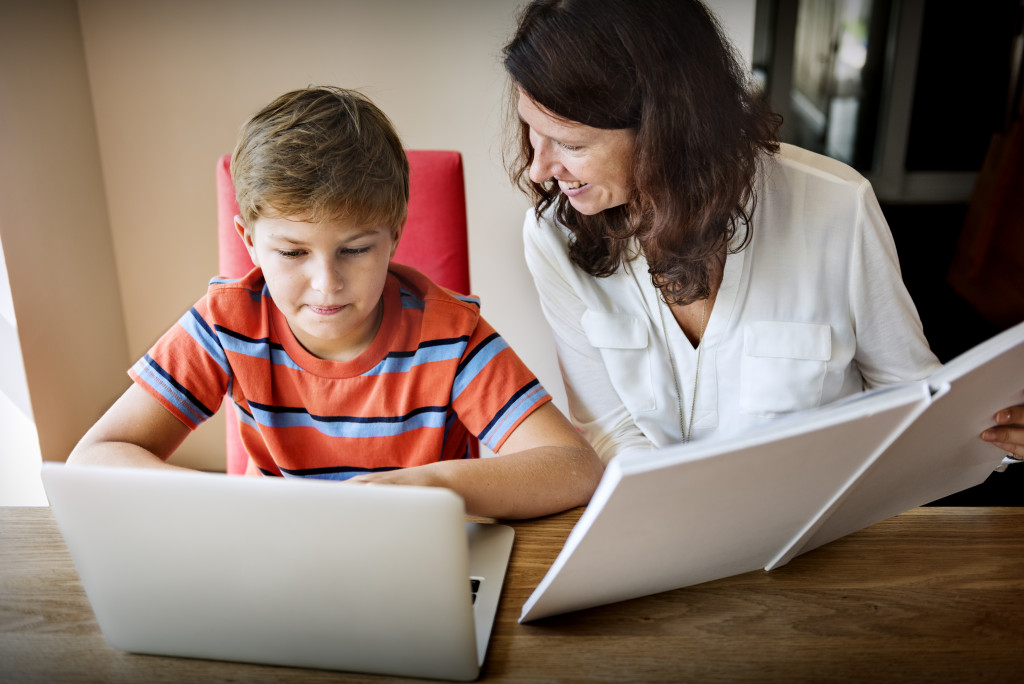In a December 15 report, U.S. News cited a new portal of the U.S. Department of Education, the School Pulse Panel. It posts information collated by the Institute of Education Sciences’ research arm, the National Center for Educational Statistics, on the impact of COVID-19 on U.S. K-12 schools.
The portal shows that almost all public schools are already open for in-person learning, and 99 percent of public-school students in the fourth and eighth grades are attending classes full-time in person. In contrast, by the end of the previous school year, only 74 percent of fourth-grade students and 67 percent of eighth-grade students were attending school either in-person full-time or in a hybrid arrangement. Early in December, U.S. President Joseph Biden highlighted that the opening of almost all public schools was made possible by the availability of vaccines for children aged five and older.
Remote Learning Again
As of December 16, however, the American Academy of Pediatrics (AAP) stated there were more than 7.36 COVID-19 cases among children, with 169,964 occurring from December 9 to 16. On December 22, CNN reported the highly contagious COVID-19 Omicron variant had reached every state only 22 days since it was first detected in the country. The District Administration posted that many K-12 public schools reverted to remote learning because of this. At the Otisfield Community School of the Oxford Hills School District in Maine, the school-wide transmission rate of COVID-19 has reached 70 percent.
School Christmas breaks are now extended in many schools. Some have shifted to virtual classes since December 16 or 17 and will resume in-person classes in early January. Mount Vernon City School District in New York has remote classes from December 22 to January 18. This is the longest shift to virtual learning among public schools.
Schools that will resume in-person classes on January 14 include Maryland’s Prince George’s County Public Schools and the Taos Municipal Schools in New Mexico. The Tri-City Community Unit School District #1 in Illinois will resume in-person classes on January 10.
Impact of Remote Learning

Data gathered from several sources point to the negative impacts of virtual learning on students. A study by McKinsey & Company, with data up to November this year, shows that all students are now behind in levels of reading and mathematics, but there are differences among them. In schools with mostly white students, the lag is only two months compared to historical levels.
However, in schools with mostly black students, the lag is five months. Since schools with mostly black students were already behind schools with primarily white students by nine months before the pandemic, virtual schooling has widened the gap to 12 months. Student absenteeism among low-income students has also increased even in physical classrooms. The rate of chronic absenteeism can lead to the dropping out of 1.7 million to 3.3 million 12th grade students due to the pandemic.
Government Response
The government is implementing a new policy to keep students in classrooms. Previously, the Centers for Disease Control and Prevention (CDC) required students to quarantine for ten days after being exposed to someone with COVID-19. This resulted in entire classrooms losing ten school days after exposure. The new CDC strategy is for exposed students to take daily or at least twice weekly COVID-19 testing. If their results are negative, they can continue coming to school.
The CDC has previously presented strategies to prevent the spread of COVID-19 in schools. A primary concern is improved ventilation to increase the intake and circulation of outdoor air. The heating, ventilation, and air conditioning system must also have a high level of filtration and undergo regular air vent cleaning. Surfaces that are often touched, such as drinking fountains, door handles, playground equipment, and toilet handles, must be cleaned and disinfected throughout the day. Trash bins must be the no-touch type equipped with foot pedals.
Physical layouts in classrooms and other communal spaces must be rearranged to ensure physical distancing. Students must be divided into cohorts with at least three feet between members of a cohort and at least six feet between different cohorts. If cohorting is not feasible among middle and high school students, they must stay six feet away from each other in areas of high transmission. There must always be six feet between teachers and staff, and between them and students. Everyone must wear masks in schools, including visitors.
Since masking is not possible while eating, the cafeteria must be spacious and well-ventilated. Physical distancing must be stricter. Cafeteria time can be staggered to cut down on the number of students eating together.
Adequate supplies must be distributed throughout the school for handwashing and hand sanitizing. Hand sanitizers must have no less than 60 percent of alcohol content. Students must be trained and regularly reminded to wash their hands with soap and water for not less than 20 seconds.
Hopefully, concerted efforts between the government and school authorities will bring more students safely back to school.







